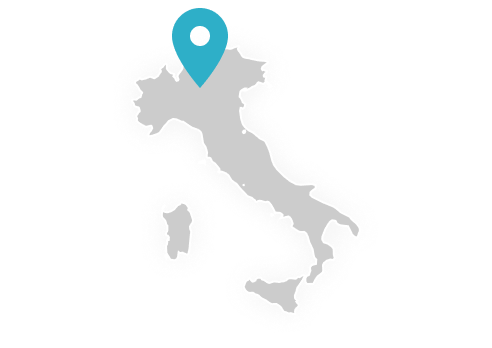The digital revolution in the banking sector had already begun. However, the coronavirus pandemic, self-isolation, and the transition to remote work worldwide have pushed financial institutions towards even faster transformation. The digital space has become an integral part of modern life. Today, everything is digital: from shopping to telecommunications, social networks, and messengers. In order to maximize customer satisfaction with financial services, banks must also be digital. Let’s take a look at what digital banking is.
WHAT IS DIGITAL BANKING?
Today, digital banks are gaining special popularity. Digital banking does not require an office, employees, cash desks, ATMs and terminals. All of these are obtained by the client in a convenient application or online bank version. In simple terms, digital banking is the automation of traditional banking services, which allows retail and corporate clients to use banking products and services through online channels (Internet and mobile networks).
The development of digital banking was mainly facilitated by unsatisfactory ratings of the traditional banking system. Investors, digital developers, artificial intelligence developers, and others became interested in the development of digital banks. Digital banking can be considered as a project of a new generation.
Examples can be given with such globally popular financial corporations as Revolut, Nubank, and N26. Later, the management of corporations decided to change the existing system and digitize financial products: bank accounts, lending, and insurance.
WHAT SHOULD A BANK HAVE TO BE DIGITAL?

To be considered a provider of digital banking services, your bank must offer:
- A full range of services: you need to implement a full range of services, including all processes from the registration of new retail and corporate clients to remote provision of all your front-office services, both financial and non-financial, remotely.
- Availability of service 24×7: availability of service 24 hours a day, seven days a week. Clients should not be limited by the bank’s working hours; they should be able to receive services at any time.
Services beyond traditional banking: In order to cater to the new digital lifestyle, banks must introduce new services such as geotargeted advertising, gamification, personal finance management, and predictive analytics based on customer behavior.
- Unified customer journeys: Digital banking solutions must provide customers with a consistent experience across all channels of service, regardless of which ones they use in different situations. This means that you must keep the customer at the center of your attention, providing personalized messages and a single source of quick access to information.
- Intuitive user experience (UX): UX aims to create a digital financial service adapted to users’ needs, offering simple and easy-to-use banking services.
- Attractive user interface (UI): Innovative and attractive interface design in digital products is indeed a necessary but insufficient condition. The user interface must be user-oriented. That means its development must be carried out in order to understand what the user as a customer wants and expects from your product.
- Efficient services: Time is of the essence, so the less time or actions the user needs to perform any operation, the better. Therefore, the number of user actions must be reduced. In this case, “less is more.” Develop solutions that are as understandable as possible, requiring the user to take minimal steps.
ADVANTAGES OF DIGITAL BANKING
Digitization in banking involves efficient and high-quality financial management and the development of technology, such as cloud computing, equipment, and software.
Digital and technological progress are closely linked, and the growing popularity of remote financial services will promote growth in the IT segment.
Today, digital banking solutions can offer advantages such as geographic expansion: from an economic standpoint, digital banking is considered the most beneficial opportunity for expanding a bank’s activity geography by increasing its audience coverage in banking services without the need to open new branches.
New revenue sources: digital banking platforms help banks create new streams of income by using customer data to create meaningful interactions with customers and develop new services.
Paperless transactions: one of the most important drawbacks of traditional banking services is the excessive amount of paper documents that have become unnecessary with the development of digital banking.
Reduced costs: eliminating the need to process paper documents and manually perform various other processes, which involves spending time for bank employees, leads to significant cost savings for banks.
Convenience: providing customers with an extremely convenient experience is a priority for banks, and digital banking is a solution that allows customers to use all types of banking services remotely and 24 hours a day.

THE DISADVANTAGES OF DIGITAL BANKING
Today, the main problem with digitalization in banking is the difficulty of launching customer service without their physical identification.
Privacy and security of personal data when using financial organization apps is also a current issue. Users must understand that their funds are secure.
Both of these issues can be solved in the near future with the development of biometric technologies for digital identification. Today, banks have made significant progress in verifying their clients, which has had a positive impact on the procedures for providing necessary financial services.
THE FUTURE OF DIGITAL BANKING
Banks and financial organizations will use every step of their clients to fully understand their life and needs and personalize services with the help of artificial intelligence.
- The role of the bank will be to determine and offer the most relevant services to the client, order and ensure payment.
- Payment for goods and services will become “invisible” to clients.
- Interaction with clients will be as simple and convenient as possible using voice, biometrics, and wearables.
- Credit products will become more flexible and personalized, and the borrower’s risk assessment will be based on their life habits and purchasing history.
- Platformization: banks will create digital platforms where clients can choose services offered by different service providers that best meet their needs and satisfy their life needs.
- Digital currencies will increase the convenience and speed of payments and allow for innovative services. Contextually-relevant financial services will replace traditional banking products.
- New products will combine all household regular payments into a single payment.
- The issue of user confidence in the security of their data and its intended use will play a significant role, and cyber security will use AI to protect data.
CONCLUSION
Being a digital bank is not only about providing financial products and services through internet banking and mobile banking. Introducing digitalization into banking requires achieving complete consistency of service channels and merging them into one system (omnichannel).
Omnichannel allows the customer to solve problems through convenient channels for both the customer and the bank for tracking all transactions in one window. Insoftex has significant experience in developing digital banking solutions. Contact us to learn more.







